INTERACTIVE ARTWORKS
Tips, suggestions, considerations and "best" practices
>
>
>
>
>
>
>
>
>
>
>
>
>
>
>
Eevi Rutanen
Academy of Fine Arts 11.12.2023
slides.eevirutanen.com/interactive
BACKGROUND


> Aalto ARTS Visual Communication Design BA 2011-2017 (1)
> Aalto ELEC Bioniformation Technology BSc 2012-2015 (2)
1
2
> Goldsmiths Computational Arts MFA 2017-2019



BACKGROUND
> Teaching Creative Computation at Aalto ARTS 2020- (1)
> Visiting lecturer at Estonian Academy of Arts 2020- (2)
> Various workshops on electronics, robotics and
e-textiles (3)



1
2
3
BACKGROUND
MY PRACTICE
> Softening the "Hard Sciences"
What kind of knowledge can be produced on the fringes of scientific enquiry?
What would "femme" or "non-binary" computational practices look like?
How to include more diverse voices in the fields of computation and engineering?
How are technology and gender intertwined? How do they shape each other?
INTERACTIVE SYSTEM
REAL WORLD
interaction
(sensors)
electro-mechanical devices
(actuators)
INPUT
OUTPUT
PHYSICAL COMPUTING
INPUTS AND OUTPUTS
WITH MICROCONTROLLERS

INPUT SIGNAL
(analog)
(noisy)
memory
logic
OUTPUT SIGNAL
(digital)
(binary)
INPUTS AND OUTPUTS
WITH MICROCONTROLLERS

Light sensor:
resistance decreases when light increases


Using a digital signal (HIGH or LOW) to make a LED blink
int value = analogRead(sensor);
if(value > 600) digitalWrite(led, HIGH);SWITCHES & BUTTONS
> Switches and pushbuttons are a simple and conventional way to add interaction into electronics
> A microcontroller can be used to read the state of the button: is the connection open or closed
> Switches and buttons come in endless variations!

1







> Yet untitled new work
> Using limit switches to control motor direction


> Skroderiders (2018) (during my studies at Goldsmiths Computational Arts MFA)
> Applying the same logic, any circuit that can be opened and closed can be used as a switch!
> Using conductive fabric on the bumpers to detect if the robots are touching each other
SENSORS
> A device that measures some physical phenomenon and converts it into a signal
> Simple sensors are usually made of materials where resistance changes with changing conditions (pressure, light, temperature etc.)





(1) light sensor
(2) pressure sensor
(3) stretch sensor
(4) flex sensor
(5) temperature sensor
1
2
3
4
5
SENSORS
> Microcontrollers are bad at measuring resistance, but good at measuring voltage.
> With sensors, we often use a voltage divider circuit, where we can measure the voltage drop between two resistors in series
> Sometimes this circuit is already embedded in the sensor!

> Using a voltage divider circuit you can turn almost any conductive material into a sensor!
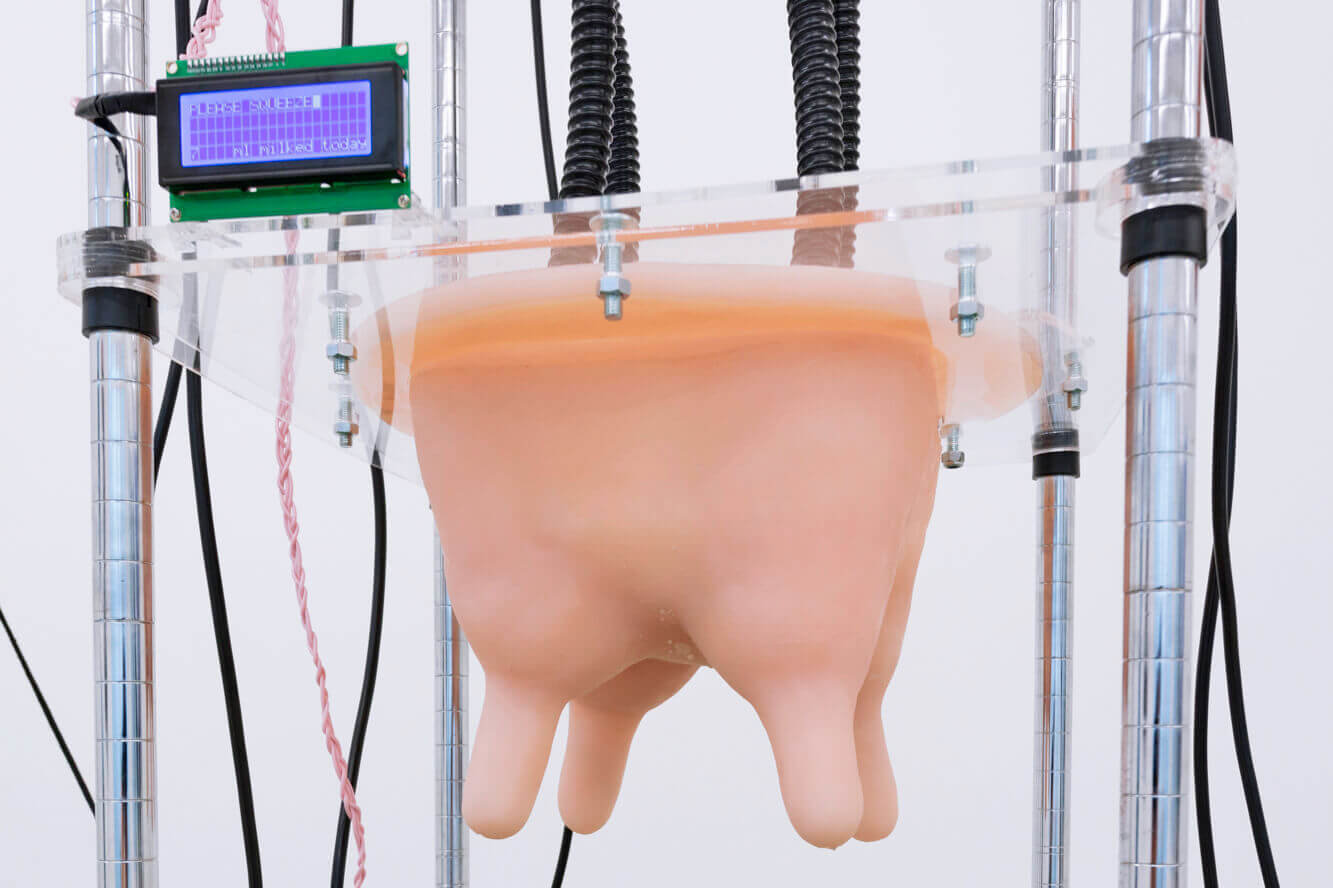
> Grasper (2018) at Binary Codes group exhibition at Seager Gallery, London

> Experimenting with conductive rubber and silicone for DIY stretch / pressure sensors using graphite powder and steel fiber.


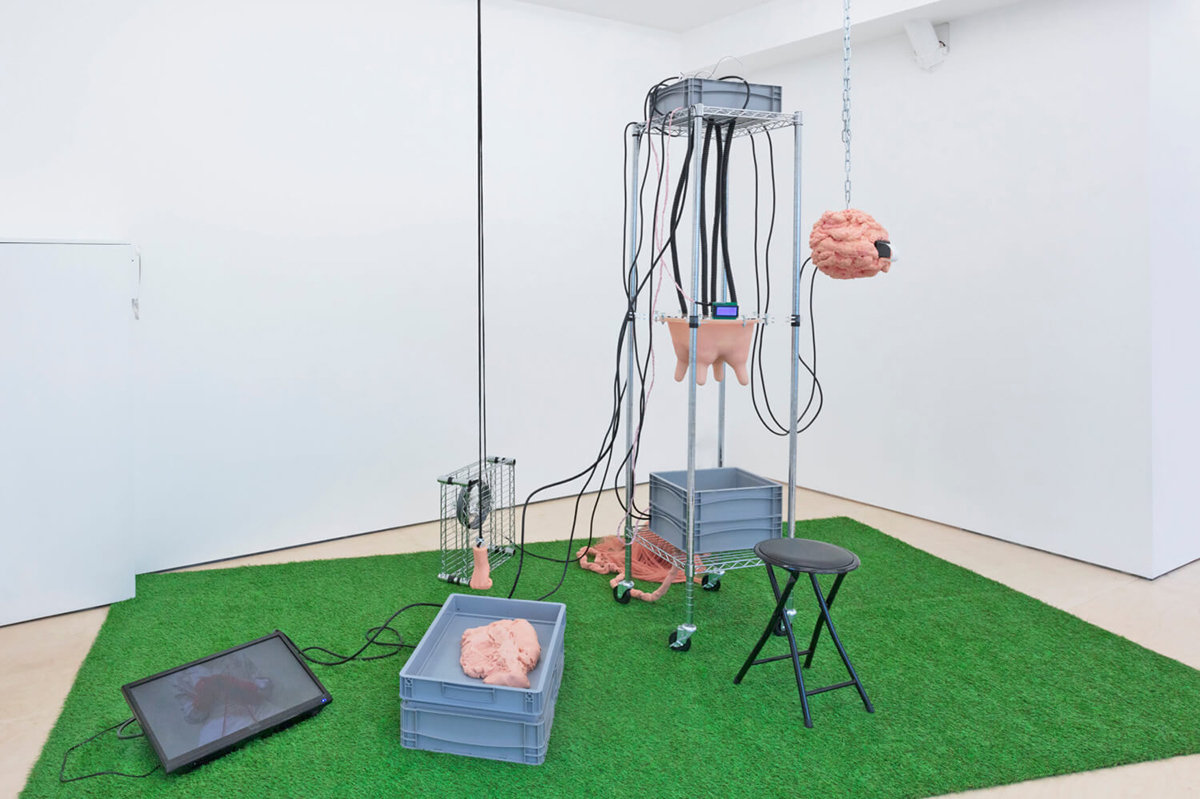
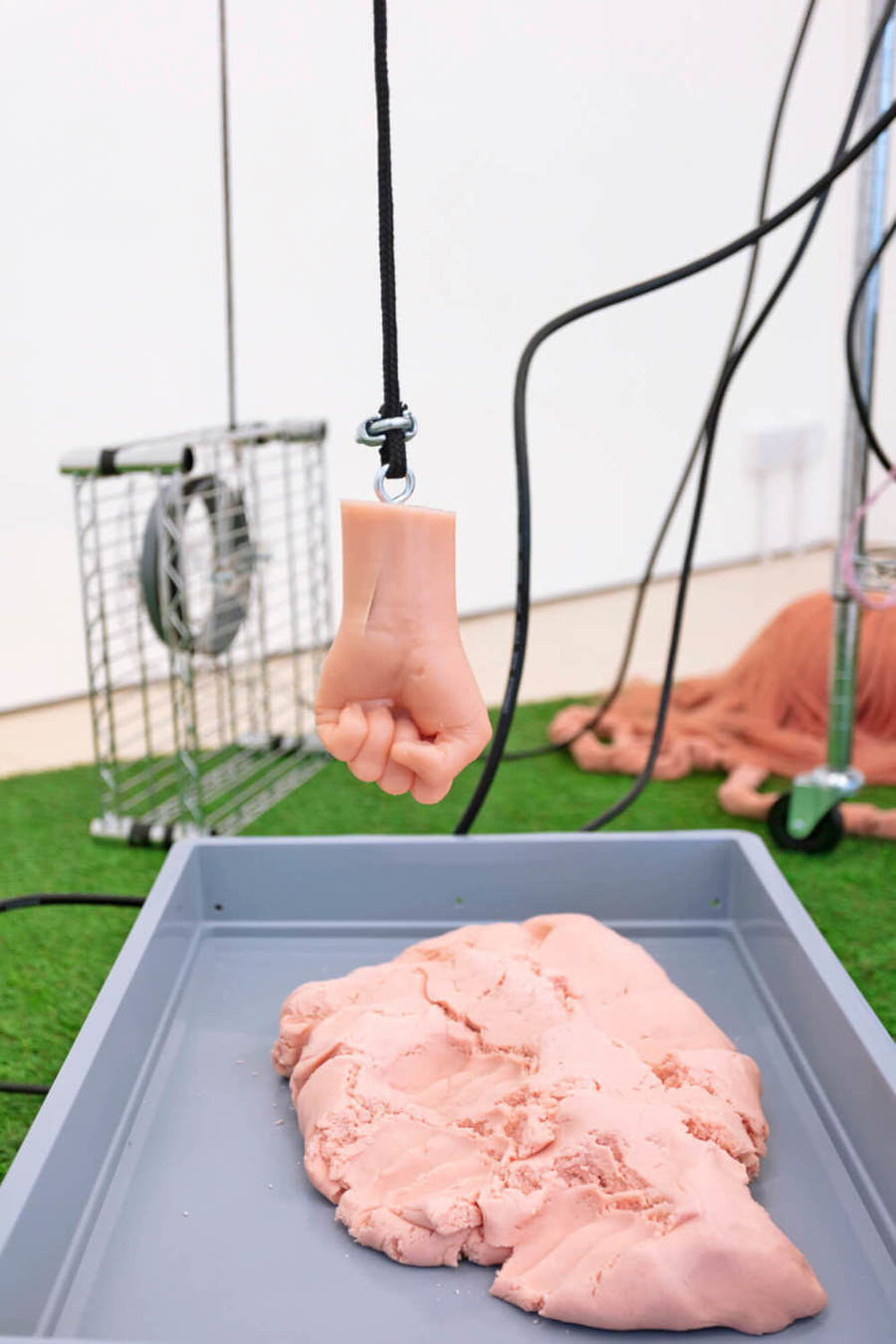
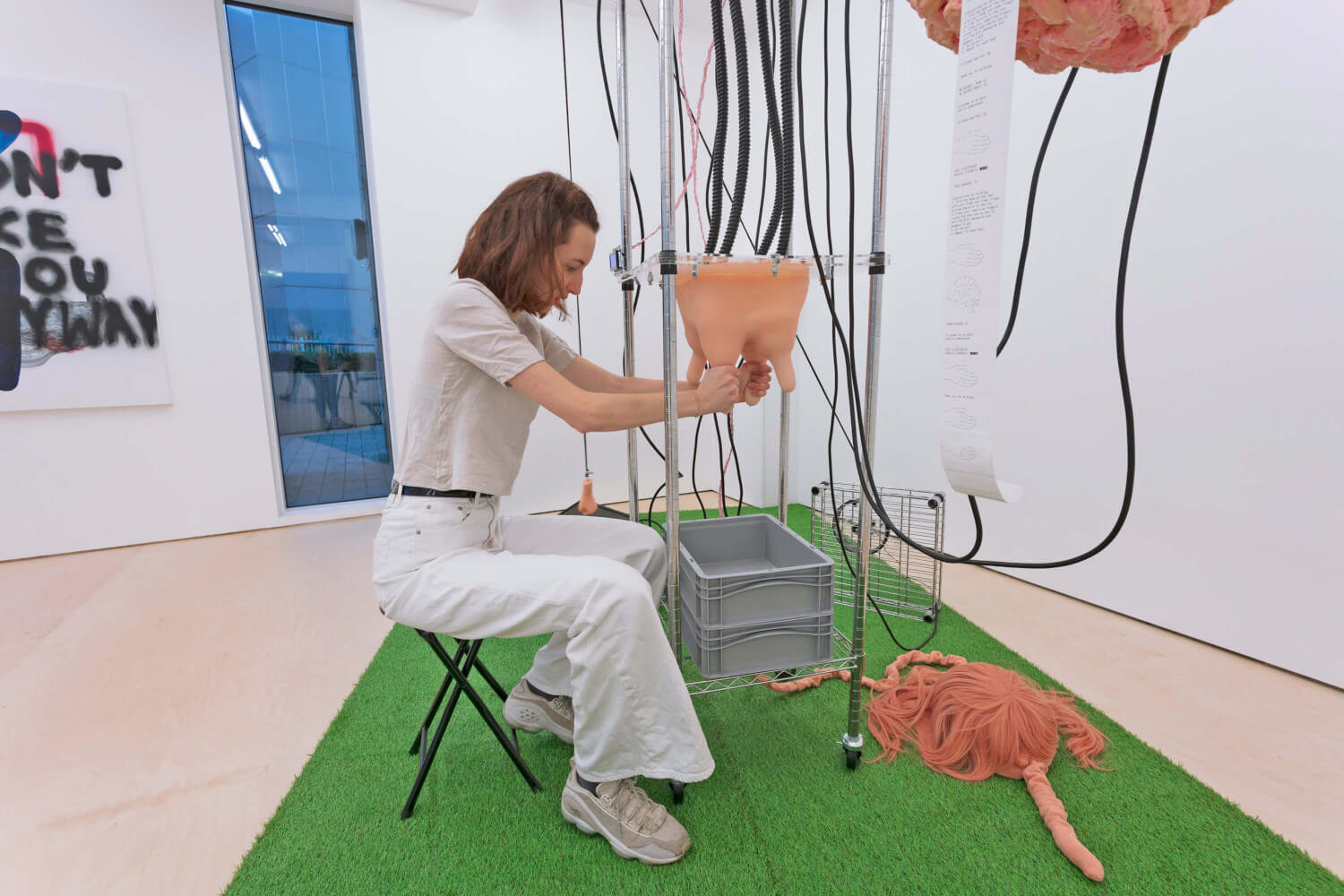


> Grasper (2018) at Goldsmiths Computational Arts MFA exhibition
SOME CONSIDERATIONS CONCERNING INTERACTIVE ARTWORKS:
> Does the mapping from the input to the output make sense? (eg. using a stretch sensor to change the speed of a motor?)
> How to convert values from one range to another?
> Is the artwork robust enough to endure repeated interaction?
> How to encourage (or discourage!?) interaction from the viewers?
SENSORS
> More complex and intricate sensors often have an integrated circuit to convert the analog signal into a digital one
> The logic needed to interpret the signal also becomes more complex: We can employ code libraries written by other Arduino users




(1) distance sensor (ultrasonic sensor)
(2) sound sensor
(3) humidity and atmospheric pressure sensor
(4) accelerometer / gyroscope sensor
1
2
3
4


Mutta metsän polkua kuljen kummallista (2021) at Mätäkuu group exhibition at TUO TUO, Joutsa. The exhibition was installed outdoors for an entire year.


> Temperature, air pressure, time and date were used to continuously generate poems in the style of Finnish national poet Eino Leino

SOME CONSIDERATIONS FOR AMBIENT SENSING ARTWORKS
> If the sensed values change very slowly or within a very small range, is the output still interesting / meaningful for the audience?
> Is the fact that the artwork is interactive elemental for appreciating the artwork?
> Can you stress test the artwork in all possible conditions?
> Are you prepared to fix or maintain the artwork while it's exhibited?
ROBOTICS
What exactly is a robot?
> Can sense its environment?
> Can process information?
> Can act autonomously to achieve a goal?
> Has more than one movement?
> Is re-programmable?
Detail from Uncanny Dimple (2019). Exhibited at Kosminen (Helsinki) and Goldsmiths Computational Arts MFA Degree Show (London)
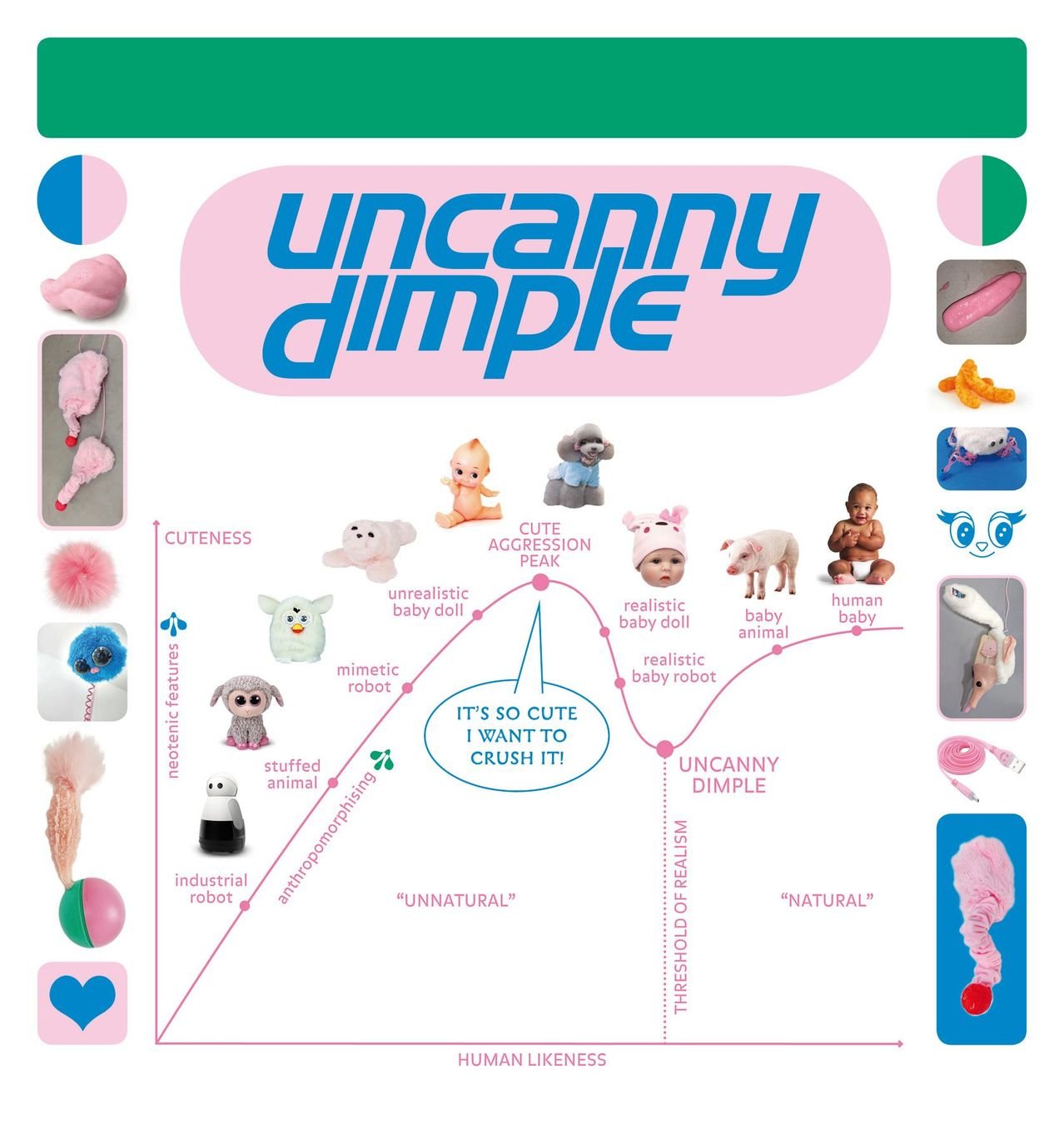
> Uncanny Dimple Theorem by Eevi Rutanen (2019) based on the Uncanny Valley theory by Masahiro Mori (1970)
> Uncanny Dimple (2019) Computational Arts MFA Degree Show at Goldsmiths, London



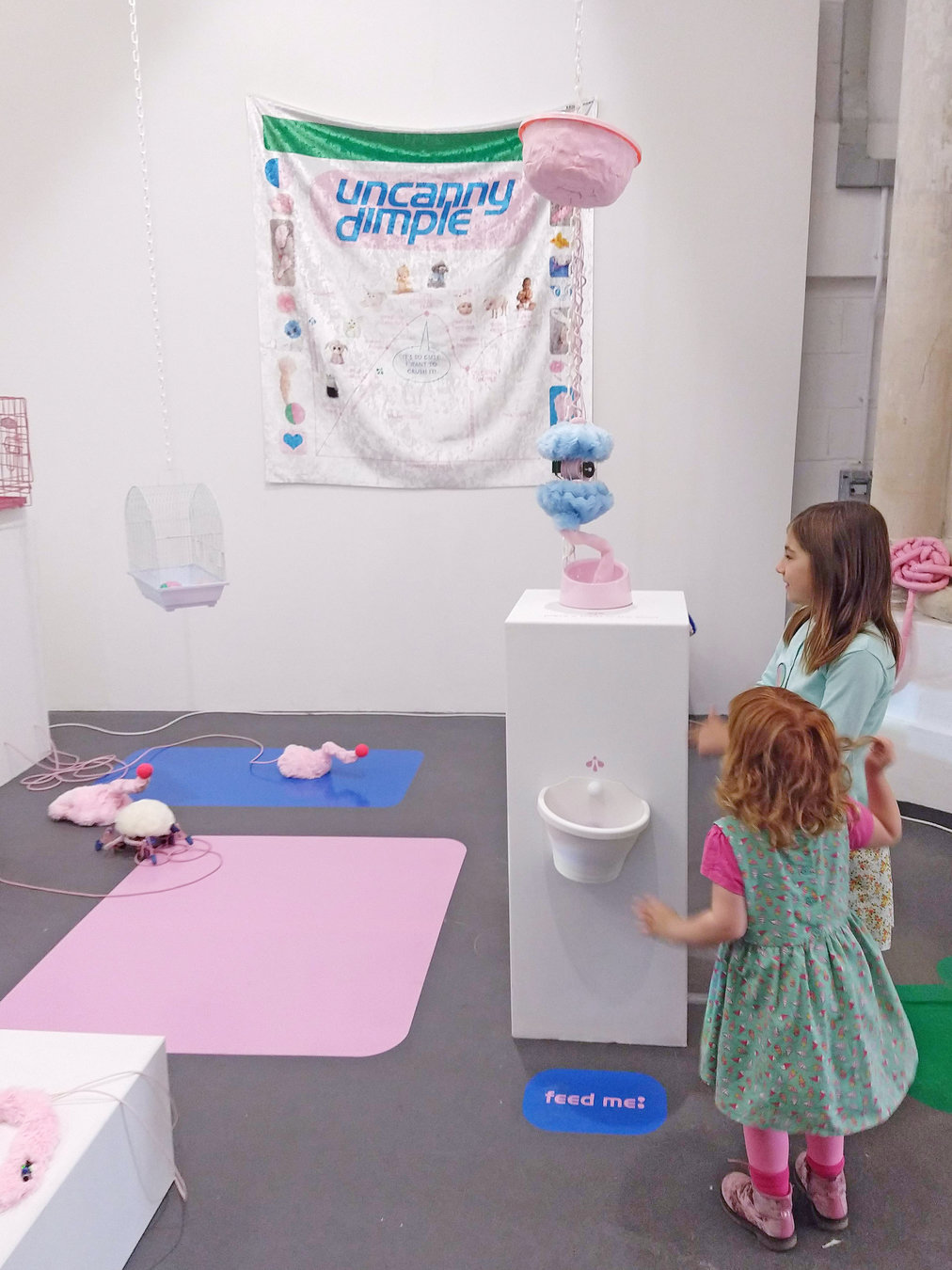



SOME CONSIDERATIONS CONCERNING ROBOTIC ARTWORKS
> Moving parts will wear and break eventually! Can the artwork be programmed to "rest" every now and then?
> Consider how to power kinetic artwork. Motors will quickly wear out batteries.
> Does the audience need instructions for interaction? Can that be a part of the artwork?
> Be creative with the use of simple sensors! Eg. a cheap and simple light sensor can be used to detect many types of interaction!
> Remember to test and calibrate sensors in the exhibition environment!
CAPACITIVE SENSING
> Any conductive material can be turned into a touch / pressure / proximity sensor using capacitive sensing
> A microcontroller can be used to measure the capacitance between two conductive surfaces, eg. a piece of foil and human skin (1)
> This requires some complex computation, which is luckily included in capacitive sensing libraries like CapacitiveSensor and ACDTouch
> There are also some commercial touch sensor modules on the market (2)


1
2

> Visceral Petting Zoo (2021) Participatory sound performance at EKA Gallery, Tallinn
> Experimenting with DIY e-textile touch sensors using capacitive sensing
> Combining traditional textile techniques like felting, knitting, crochet and embroidery with conductive materials like metallic thread and steel wool
> Using the Arduino LilyPad sewable microcontroller



WHERE TO START WITH INTERACTIVE ARTWORKS?
> Source parts and components
> Google! There probably is a tutorial out there...
> Build a minimum viable project / proof of concept using inexpensive and easy materials
> Can you use 3D-printing, CNC or laser cutting for prototyping?
> Take notes and photos, draw circuit diagrams, write comments in your code! You will forget quicker than you think...



> Fuzzy Logic (2022) solo exhibition at Huuto Gallery, Helsinki




> Potentiometers are manually adjustable variable resistors
> They function as voltage
dividers and the value can be read with a microcontroller





SOME CONSIDERATIONS WHEN SOURCING MATERIALS FOR INTERACTIVE ARTWORKS
> Can you repurpose, misuse or modify mechanisms parts and components?
> Modifying existing hardware is easier than building it from scratch!
> Recycling centers, flea markets and online marketplaces are great for finding old tech, toys and devices that can be repurposed
> Also new components from hardware stores and online shops can be used in unconventional ways!
> Remember caution! DO NOT TRY TO MODIFY HIGH VOLTAGE APPLIANCES!
THANK YOU!
> eevirutanen.com
> @eebiru
> Upcoming solo exhibition at Salo Art Museum in the summer 2024

KuvA
By eevirutanen
KuvA
- 17



